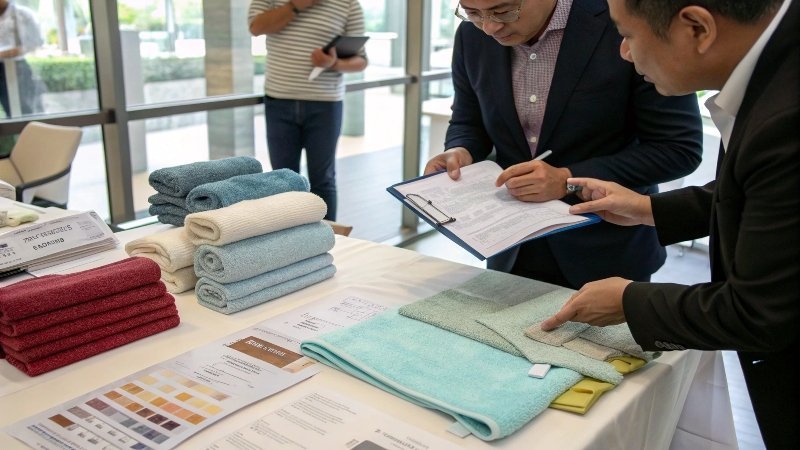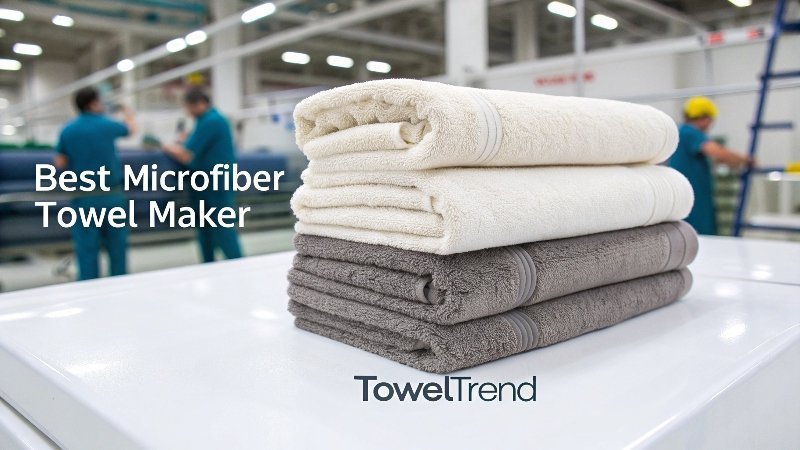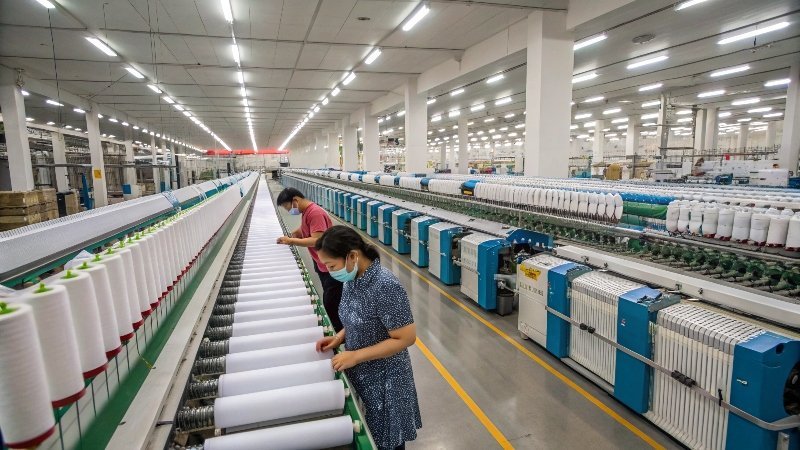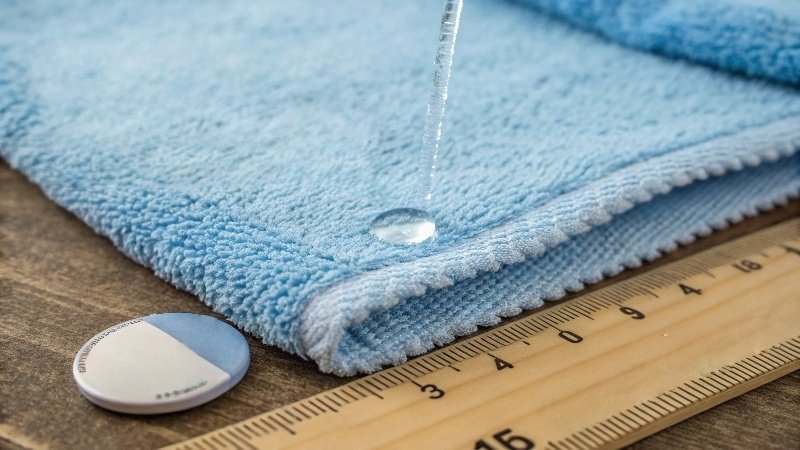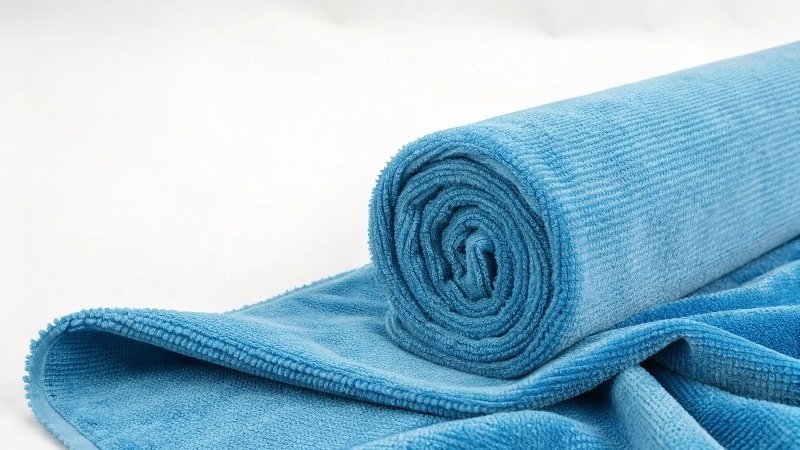Choosing a microfiber towel manufacturer feels impossible, leaving you worried about quality issues and delays. This guide breaks down the simple steps to find a reliable supplier who can help your brand succeed.
To choose the best microfiber towel manufacturer, first verify their experience and location, as most quality microfiber comes from China. Next, assess their product quality by checking the GSM rating and requesting samples. Finally, confirm they can meet your business needs, like low minimum order quantities and fast, reliable shipping.
Finding the right manufacturing partner is one of the most critical decisions you’ll make for your brand. It’s not just about getting the lowest price; it’s about finding a team that understands your vision and can deliver consistent quality on time, every time. I’ve spent years in the textile industry, and I’ve seen firsthand how a great supplier can accelerate growth, while a poor one can sink a product line before it even launches. The good news is that with the right knowledge, you can navigate this process confidently. Let’s dive into the key questions you should be asking to find a partner you can trust.
Who makes the best microfiber towel?
You need the best microfiber towel for your brand but have no idea who to trust. Picking the wrong supplier leads to negative reviews and lost customers, hurting your reputation. Look for experienced manufacturers with proven track records and a focus on partnership.
The "best" microfiber towel maker is a partner with deep production expertise and a robust supply chain, like us at TowelTrend. We use our years of textile knowledge and access to top-tier materials to create consistently excellent towels that are customized to your brand’s specific needs for softness, durability, and performance.
In my experience, the "best" manufacturer isn’t just a faceless factory; it’s a partner dedicated to your success. When I first started in this industry, I thought it was all about specs and machinery. But I quickly learned that the human element—the experience, the communication, the commitment to quality—is what truly separates the great suppliers from the average ones. A top-tier manufacturer doesn’t just take your order. They ask questions, offer suggestions, and work with you to create the perfect product for your customers.
I remember a client who came to us after a terrible experience with another supplier. Their towels were inconsistent in color and feel, and their customers noticed. We didn’t just make new towels for them. We worked with them to establish clear quality standards, created a master color sample for them to approve, and implemented a strict in-house QC process to ensure every single towel in every single batch matched perfectly. That’s what a true partner does.
Key Traits of a Top Manufacturer
A great manufacturer shows their quality through their processes and credentials. Look for these signs:
- Deep Experience: How long have they been in business? Do they specialize in microfiber?
- Certifications: Do they hold certifications like OEKO-TEX® (for textile safety) and BSCI (for ethical business practices)? These aren’t just logos; they are proof of commitment to quality and responsibility.
- Transparency: Are they open about their process? Will they provide samples and answer your technical questions clearly?
- Flexibility: Can they handle your order size, whether it’s a 100-piece test run or a 5,000-piece restock?
Where are microfiber towels made?
You are trying to source towels, but the product’s origin is a mystery. This uncertainty can create big problems with quality, cost, and shipping times. You need to understand the global manufacturing map to make a smart choice.
The vast majority of microfiber towels are manufactured in China. This dominance comes from the country’s highly developed textile industry, excellent supply chains for raw materials like polyester and polyamide, and decades of focused manufacturing expertise. While other countries produce microfiber, China leads in both volume and innovation.
When I tell new clients that our factory is in China, I sometimes see a moment of hesitation. For years, "Made in China" was associated with cheap, low-quality goods. But in the modern textile world, that stereotype is completely outdated. Today, China is the undisputed global leader in high-quality microfiber production, and for very good reasons. The country has invested heavily in creating an incredibly efficient and sophisticated ecosystem for textile manufacturing. This means everything from the raw polyester and polyamide yarns to the specialized splitting and weaving machinery is readily available.
This concentration of resources creates huge advantages for brands. It means faster production times, more competitive pricing, and access to the latest innovations in fabric technology. A few years ago, a client in the automotive space wanted a unique dual-pile towel—one side for buffing, one for drying. Because of our location, we could easily work with specialized suppliers for each type of weave and combine them into a single, seamless product. That level of customization and speed would be difficult and much more expensive to achieve anywhere else in the world.
Why China Dominates Microfiber Production
| Factor | China’s Advantage | Impact for Your Brand |
|---|---|---|
| Supply Chain | Vertically integrated; raw materials, weaving, and finishing are all in one place. | Faster lead times, lower costs. |
| Expertise & Labor | Decades of experience and a large, skilled workforce specializing in textiles. | Higher quality, consistent production. |
| Technology | Access to the latest weaving, dyeing, and finishing machinery. | More options for innovation and custom products. |
| Scalability | Infrastructure to handle both small test orders and massive production runs. | Ability to start small and scale up quickly. |
How can you tell if a microfiber towel is good quality?
All microfiber towels look pretty much the same when you first see them. But low-quality ones don’t absorb well and fall apart after a few washes. You can learn a few simple tests to spot a quality towel almost instantly.
To tell if a microfiber towel is good quality, first check its weight, or GSM (Grams per Square Meter)—a higher number means a denser, more durable fabric. Also, perform a water test: a good towel should absorb a drop of water instantly. Finally, feel its softness and check for tight, even stitching along the edges.
You don’t need a lab to spot a good microfiber towel. Over the years, I’ve taught our clients a few simple, hands-on tricks to quickly tell the difference between a premium product and a cheap imitation. These are the same quick checks I do myself when evaluating a new fabric. The most important thing to remember is that quality is about performance. A towel can look nice, but if it doesn’t absorb liquids or grab dust effectively, it’s useless.
Requesting a sample from a potential manufacturer is non-negotiable. Once you have it in your hands, you can become your own quality control expert. Feel the fabric. Is it soft and plush, or does it feel a bit stiff and scratchy? A quality towel feels luxurious. Then, look closely at the edges. Are the stitches tight and even? A poorly stitched hem is often the first thing to unravel in the wash. These small details are big indicators of the overall care and quality that went into making the towel.
Simple Quality Checks Anyone Can Do
| Test Method | What to Do | What It Tells You |
|---|---|---|
| The Water Test | Place a few drops of water on the towel. | Good Quality: Water is absorbed instantly. Poor Quality: Water beads up and sits on the surface. |
| The Feel Test | Rub the fabric between your fingers and against your skin. | Good Quality: Feels soft, plush, and slightly grippy. Poor Quality: Feels stiff, flat, or slippery. |
| The Weight Test | Hold it in your hand. Does it feel substantial or flimsy? Check the GSM spec. | Good Quality: Has a noticeable weight (250+ GSM). Poor Quality: Feels light and thin (<200 GSM). |
| Stitching Check | Inspect the seams and edges. | Good Quality: Tight, even stitching with no loose threads. Poor Quality: Frayed edges, loose or uneven stitches. |
What is high quality microfiber?
You see the term "high quality microfiber" advertised everywhere. But what does that actually mean for the performance of your product? You can understand the key factors that separate a premium towel from a basic one.
High-quality microfiber is defined by two key factors: its material blend and its fabric weight (GSM). A superior blend is typically 80% polyester and 20% polyamide for the best softness and absorbency. A higher GSM, generally above 250, indicates a denser, more durable, and more effective fabric.
Not all microfiber is created equal. The magic of microfiber comes from its unique structure, and "high quality" refers to a fabric that has been engineered for maximum performance. The two most important specifications to understand are the blend ratio and the GSM. Think of these as the DNA of your towel.
The blend ratio refers to the mix of polyester and polyamide. Polyester provides the structure and scrubbing power, while polyamide provides the softness and incredible absorbency. A towel made of 100% polyester simply won’t absorb water; it will just push it around. That’s why the 80/20 blend is the gold standard for most applications. It provides the perfect balance. For some of our clients who need extreme absorbency, we might even use a 70/30 blend.
Then there’s GSM (Grams per Square Meter), which is a direct measure of the towel’s density. A higher GSM means more fibers are packed into the same space, resulting in a plusher, more absorbent, and far more durable towel. It’s the difference between a thin, flimsy cleaning rag and a thick, luxurious drying towel.
The Anatomy of Premium Microfiber
| Feature | Low Quality | High Quality | Why It Matters |
|---|---|---|---|
| Blend Ratio | 90/10 or 100% Polyester | 80/20 or 70/30 Polyester/Polyamide | Polyamide is critical for softness and water absorption. |
| GSM | Below 200 GSM | 250 – 500+ GSM | Higher GSM means more density, durability, and absorbency. |
| Fibers | Not properly "split" during manufacturing. | "Split" fibers that create a star-like cross-section. | Splitting creates the microscopic hooks that grab dirt and liquid. |
Conclusion
Choosing the right manufacturer comes down to verifying their location and experience, and understanding quality markers like GSM and material blend. It’s about finding a true partner for your brand’s growth.

